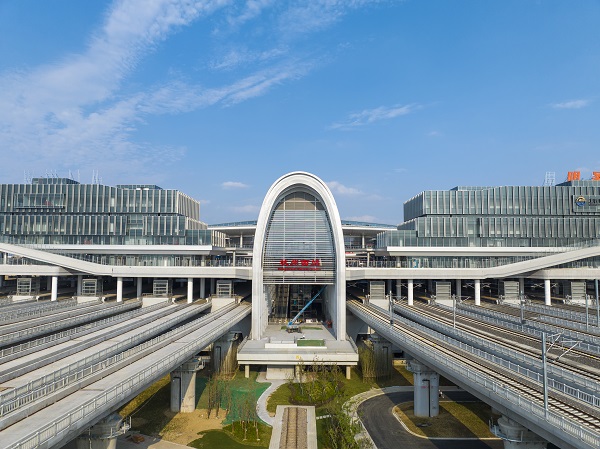Two years after its opening in September 2022, Hangzhouxi Railway Station, or Hangzhou West Railway Station, has become a beacon of sustainability, local media outlets reported.
The station's rooftop solar project, featuring 7,540 photovoltaic panels, has generated 5.91 million kilowatt hours of electricity, equivalent to reducing coal consumption by 2,308 metric tons and carbon emissions by 5,900 tons.
As Hangzhou's third-largest transportation hub and part of China's newest generation of high-speed rail stations, Hangzhou West was designed with green building principles at its core. In May 2021, the station earned China's three-star green building design certification, making it the city's first transportation hub to achieve this accolade.
The photovoltaic system spans 15,000 square meters on the station's rooftop, blending harmoniously with its iconic central skylight. Employing high-efficiency monocrystalline silicon panels and advanced inverters, the project supports a "self-use with surplus fed to the grid" model, powering station operations like lighting, air conditioning, and elevators while significantly reducing costs.
A smart PV management system ensures efficient energy usage and centralized monitoring, while the station's architectural design—allowing natural light and ventilation—further cuts energy consumption. Features like a 12,500-sq-m skylight bring sunlight into the waiting hall, and the open-plan structure maximizes airflow and natural light in the underground levels.
With its innovative combination of green technology and energy-saving design, Hangzhou West exemplifies the integration of transportation infrastructure with sustainability, setting a new benchmark for eco-friendly urban development.

